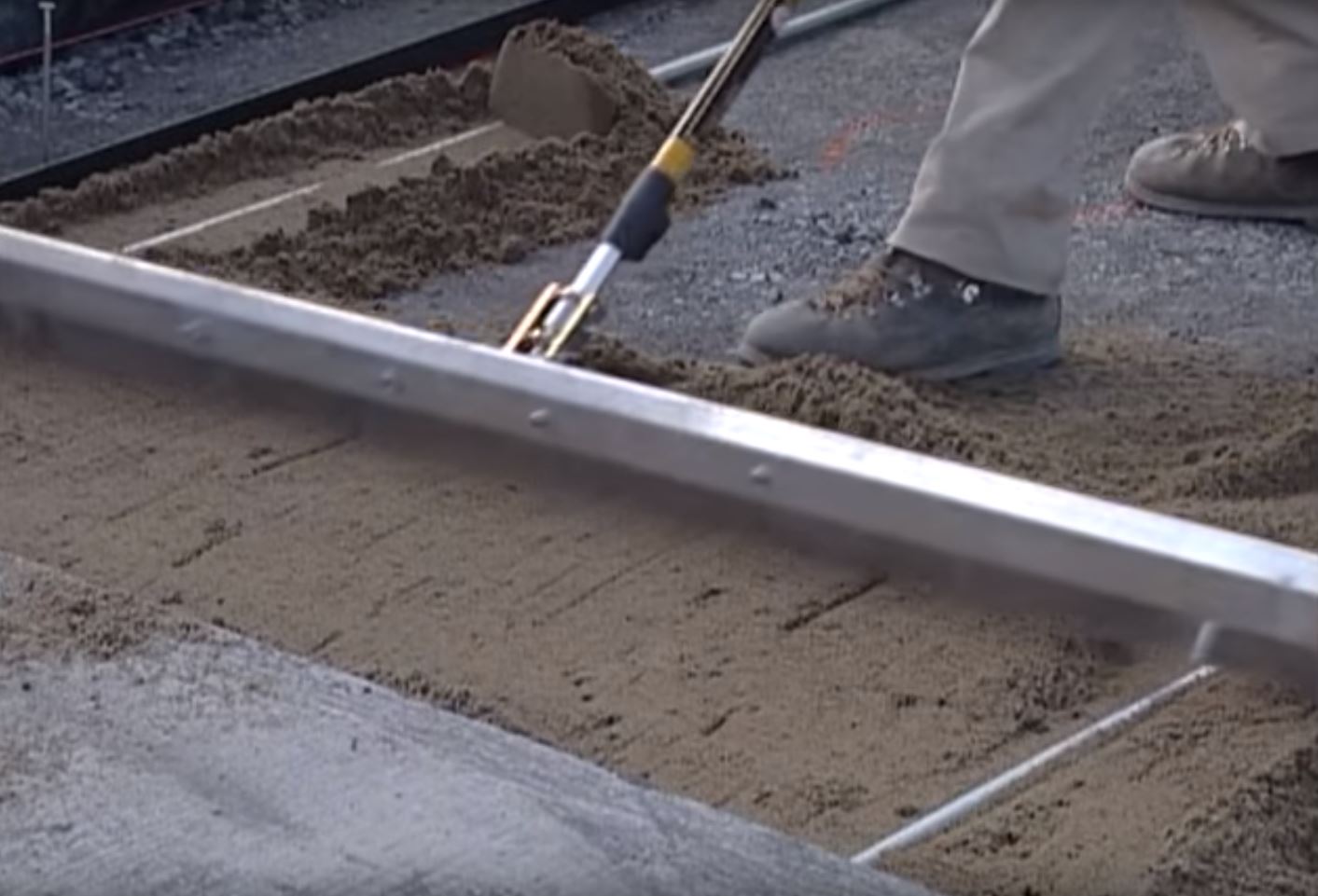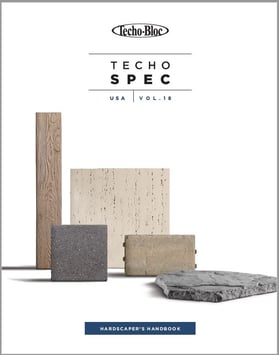Paver Pete demonstrates how to prepare the setting bed for the pavers in an interlocking pavement installation.
In an interlocking pavement installation, ASTM C33 washed concrete sand should be used for the setting bed.
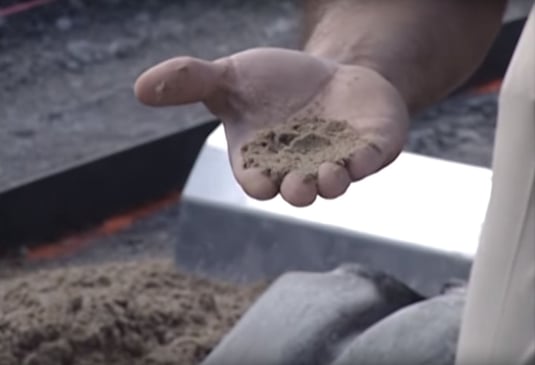
This material is free of fines, and there’s 0% passing the 200 sieve with it.
It’s coarse angular rough sand with particles that are visible with the naked eye.
Here are two main reasons we recommend using washed concrete sand as opposed to any kind of stone dust, or anything with a high percentage of fines.
1- Drainage
The pavement is 97% impermeable, which means 3% permeability. There will be water traveling through it, and it will be able to dissipate into the environment thanks to the dimpled drain board we previously installed against the curb.
For more information on dimpled drain board installation, click here.
2- Shear transfer
Once the sand is loosely screeded, its particles will be worked up into the joints between the paving units, which is called shear transfer.
The sand in between the paving units will allow better distribution of the loads.
As opposed to acting as individual units, they act as a pavement.
Also, there should be no flat elongated particles and no little thin pieces of stone in the sand. The repetitive traffic load will break them down.
Installing the setting bed
STEP 1: Lay two 1-inch pipes and expose them with a shovel to remove the sand that might have fallen on them.
Be careful not to pre-compact the area in-between the pipes by stepping on it.
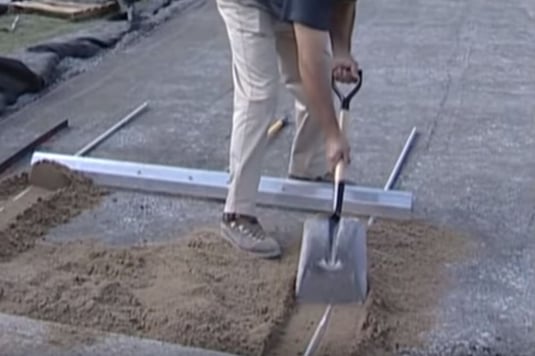
STEP 2: Screed a consistent 1-inch setting bed.
This step was made easier with the Quick-E-Screed tool from Pave Tool. Its light weight allows it to be dragged easily over the pipes.
The edge restraint can be used as a guide.
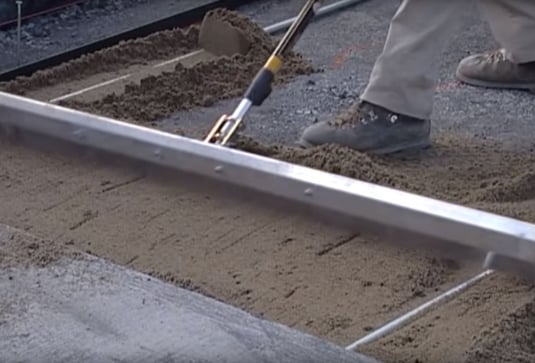
Screed as much sand as you can lay before it dries out.
We need the moisture in the sand to set the pavers and compact them into this bed.
The sand has the lubrication it needs to work up in the joints.
NEED MORE TECHNICAL INFO? WE'VE GOT YOU COVERED!

